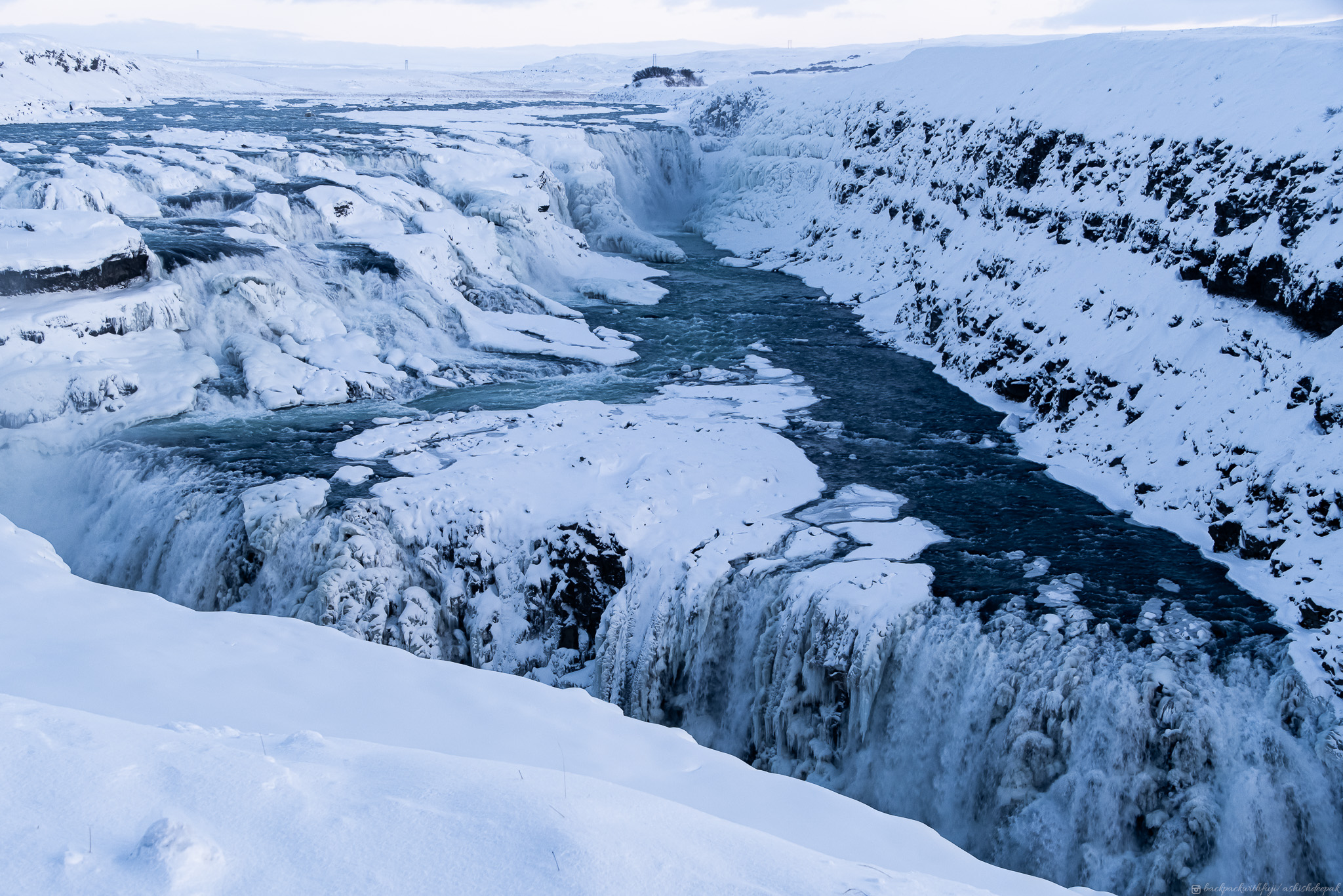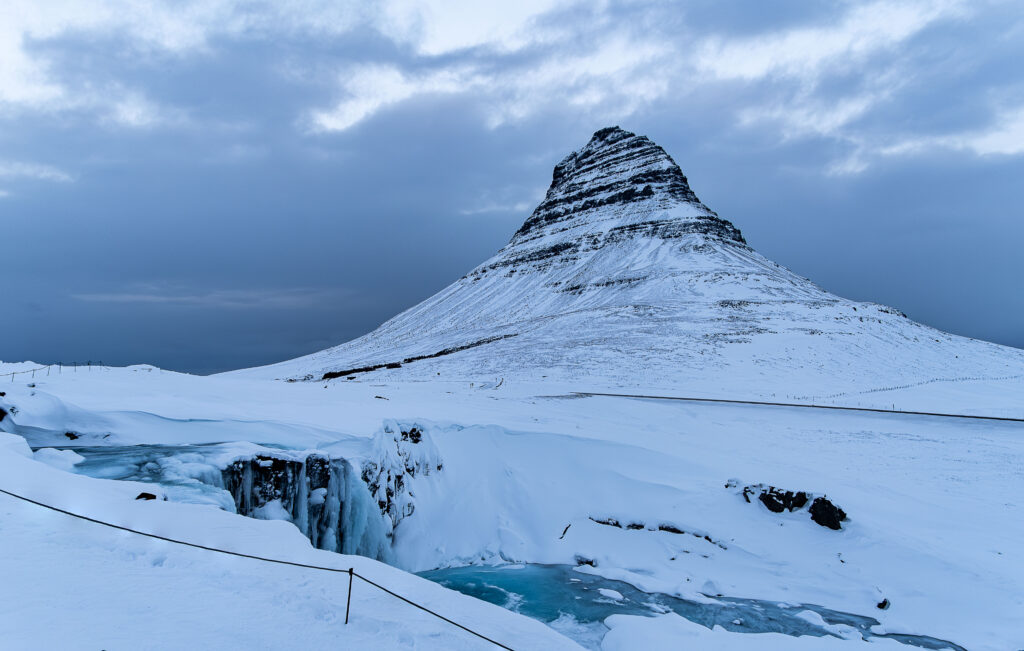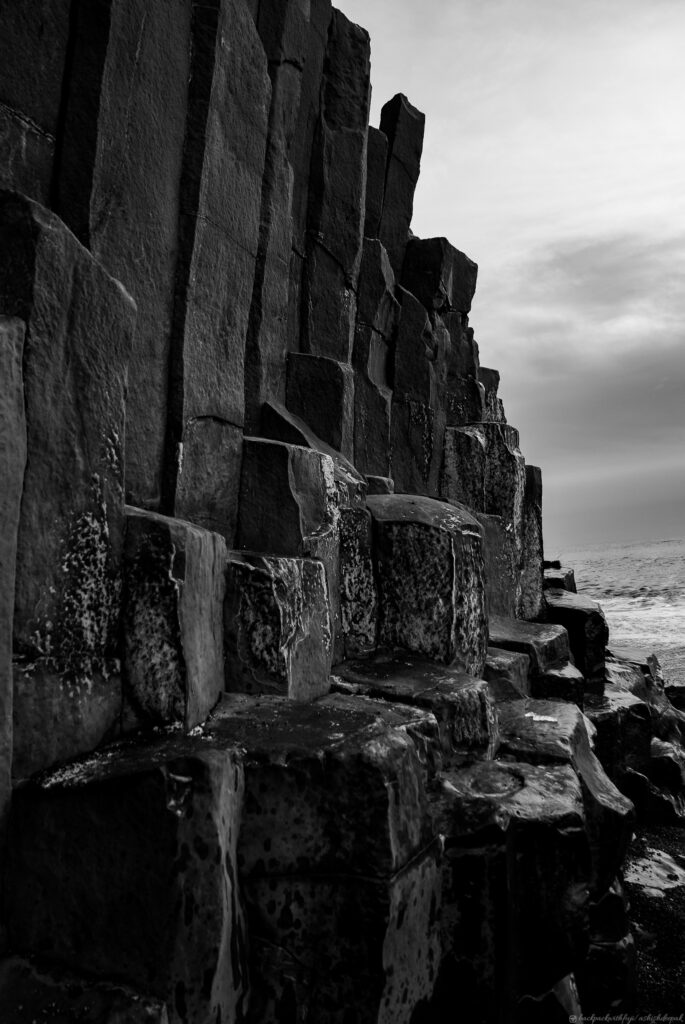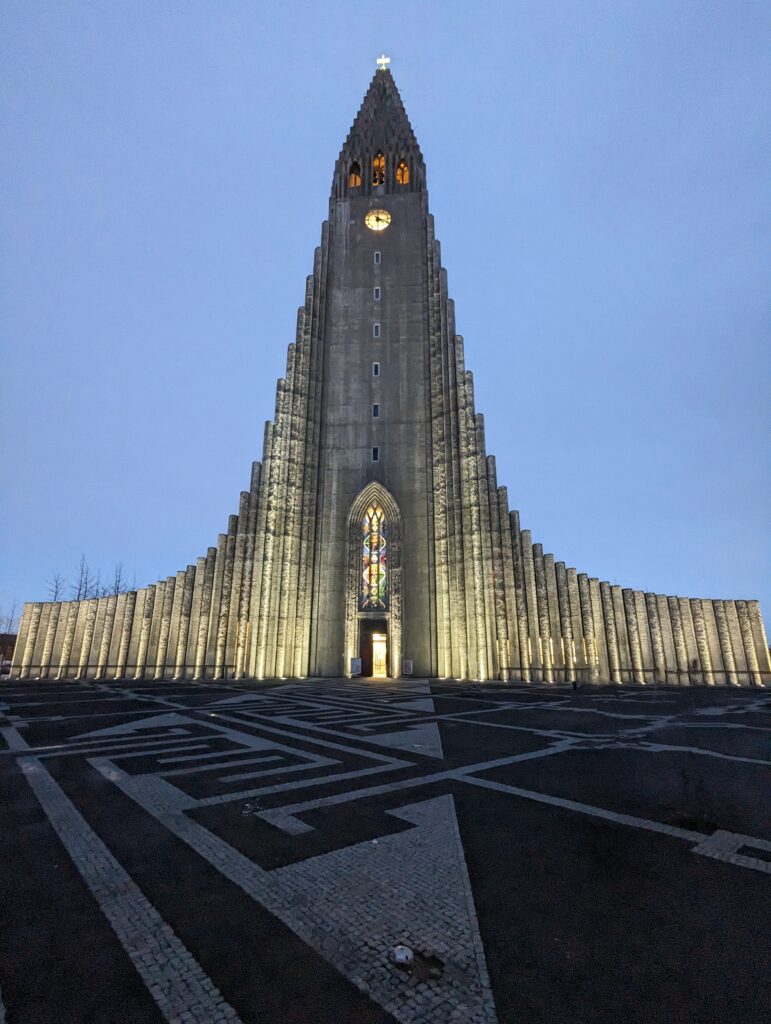After exploring Reykjavik on the first night, it was my first day with BusTravel Iceland Tours. The first tour was to Reykjavik’s ever-famous Golden Circle. The tour consists of the famous Gullfoss waterfalls, Thingvellir National Park and Geysers with an additional stop at Kerid Crater.
The tour starts at 8 am and the bus picks up the passengers from various pick-up points before hitting the road. After an hour of travelling, we stopped at a petrol station to freshen up and buy breakfast and snacks. Our guide for the day was Rose, very joyful and informative. She started the trip by giving brief information on the places included in the tour and reminded everyone to respect the time as the daylight is shorter during December.
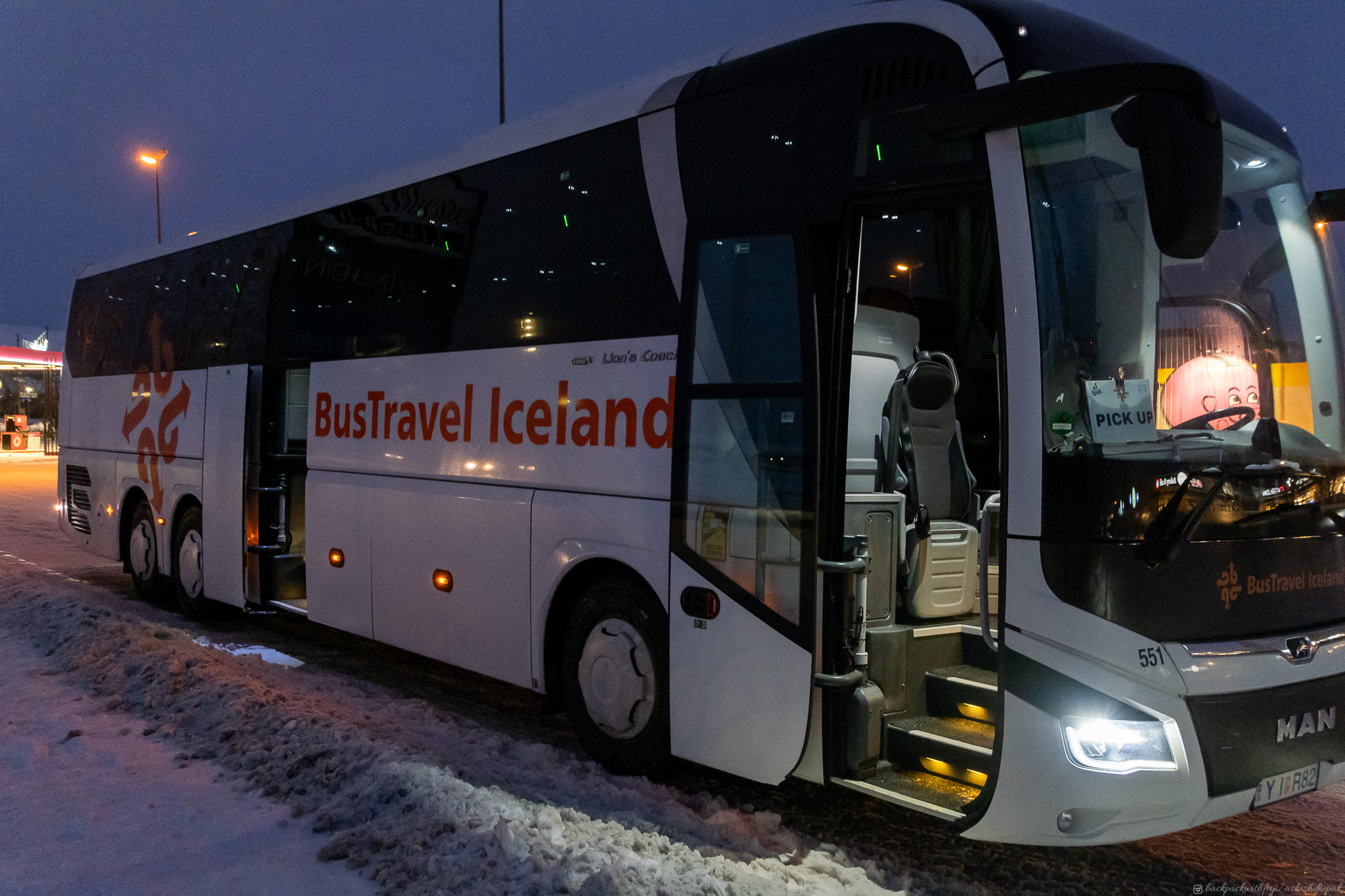
Kerid Crater
The first stop for the day was Kerid Crater. An extinct volcanic crater which turns into a frozen lake in Winter and a stunning blue lake in the summer. We were given 45 minutes to explore the crater. You can walk along the perimeter of the volcano or even climb down to the lake below. The day before I had seen photos of Nacreous clouds (ice polar stratospheric clouds) on Instagram from a user in Alaska. On a cold day in Iceland climbing the crater, nature gifted everyone with the distinct pink clouds. I was lucky enough to enjoy it and capture the same.
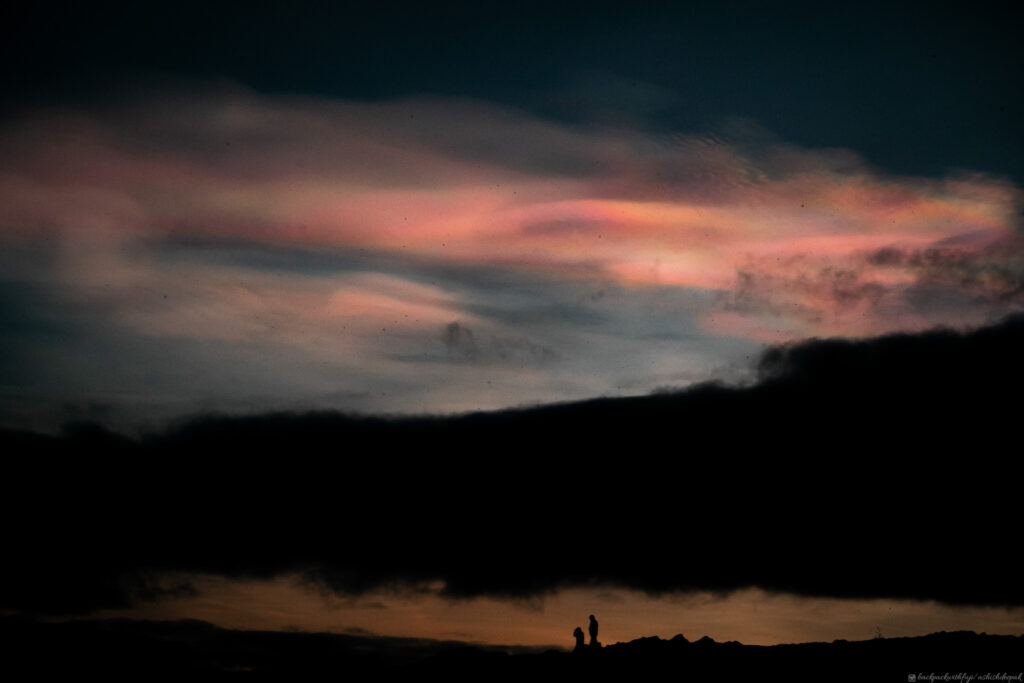
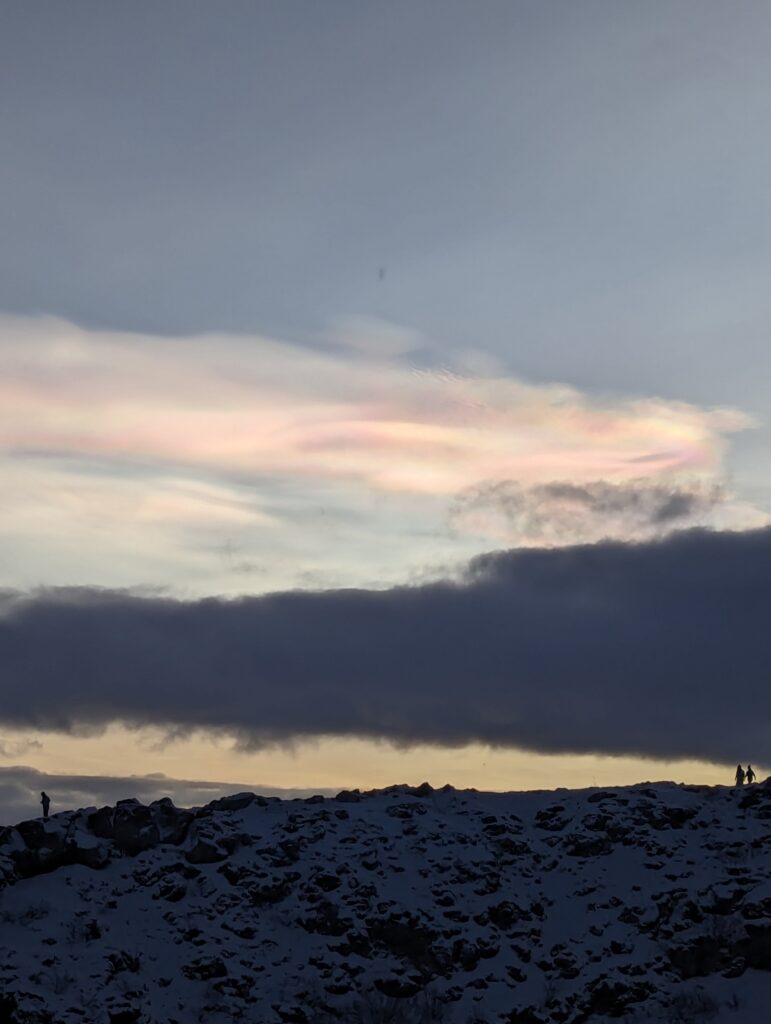
Though the crater is extinct, the views are still majestic and even with the lake frozen, it is a view to behold.
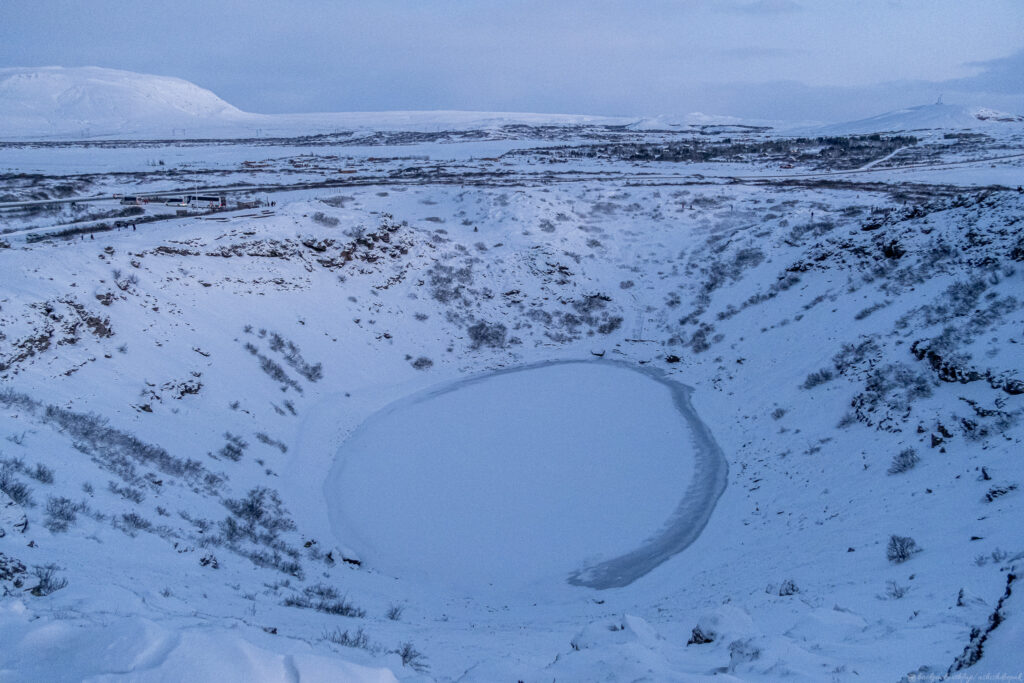
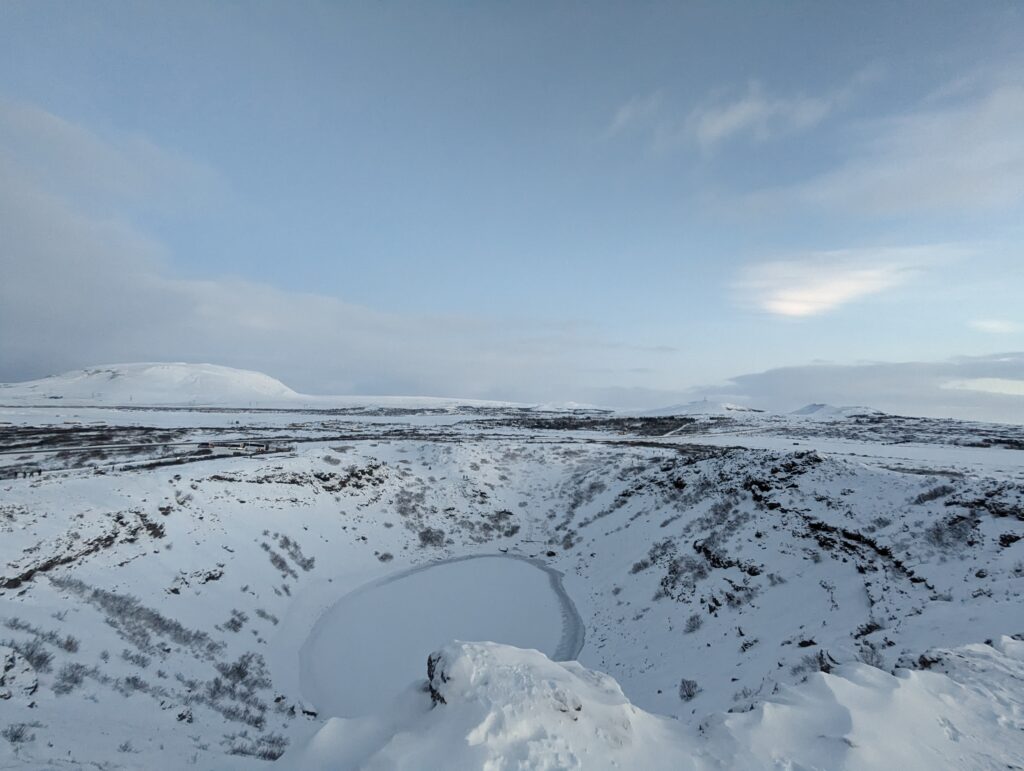
Gullfoss Falls
After capturing the views of crater, we hit the road again and after 45 minutes of travelling, we reached Gullfoss Falls. Translated to Golden Falls for its golden colour when the sun’s rays hit the gushing water. The Hvita River flows southward and falls into a three-step “staircase” and falls into a crevice 32 metres deep. The average amount of water running down the waterfall is 141 cubic metres (5,000 cu ft) per second in the summer and 80 cubic metres (2,800 cu ft) per second in the winter. Gullfoss is one of the most popular destinations for tourists in Iceland.
There are two viewing platforms to enjoy the waterfall. One from the top deck to get a more aerial view and the lower deck to get the view as you see in the photos below. I couldn’t go to the top deck as the time allocated was less and it was crowded compared to other attractions.
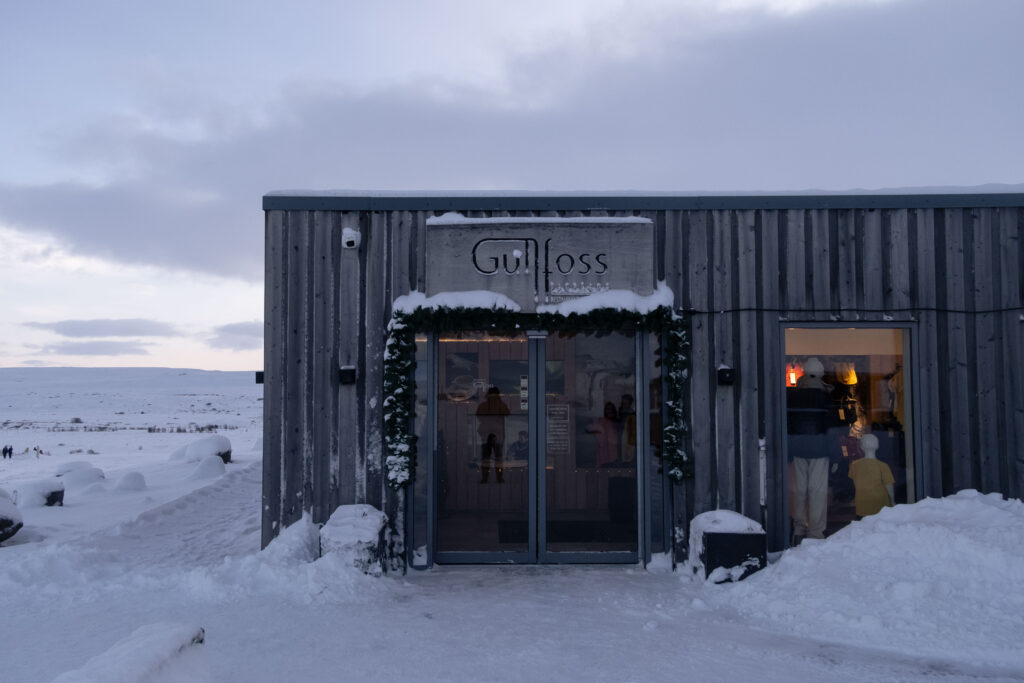
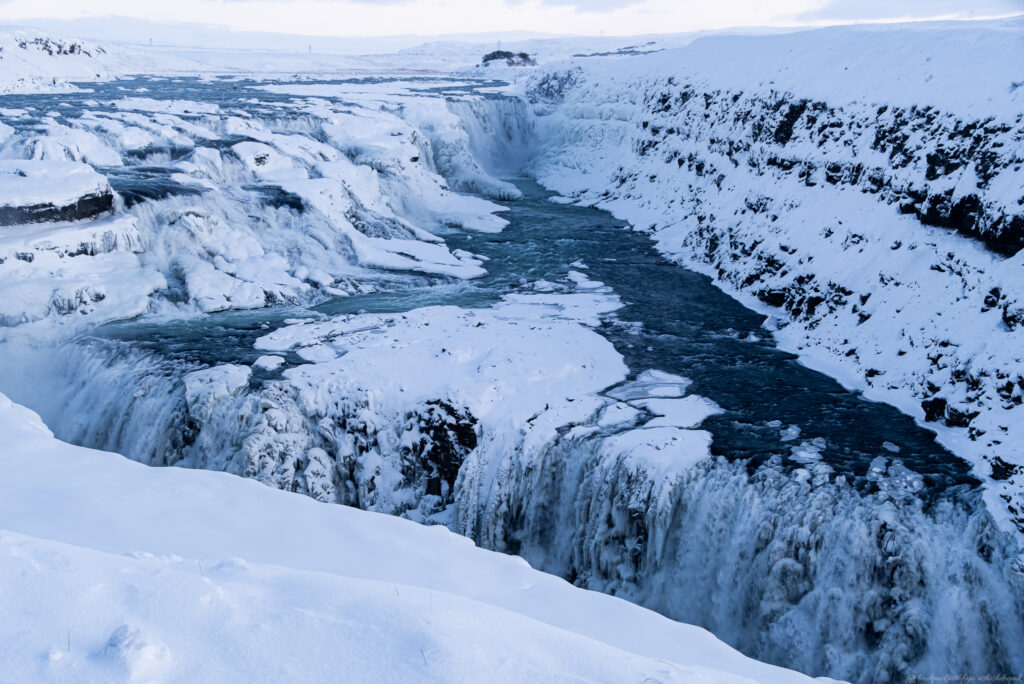
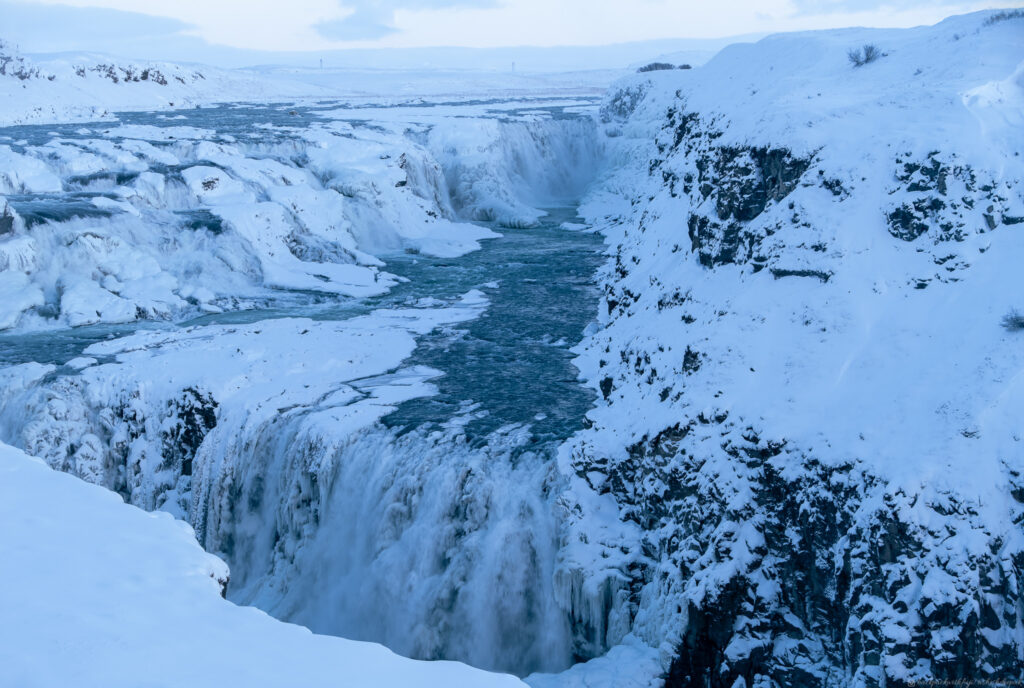
Geysir hot springs
After taking in the view of the massive waterfall, our next stop was 10 minutes away- The Geysir Centre. The English word Geyser is derived from Geysir. As you approach the Geysir, the air fills up with a pungent smell of sulphur. The famous Geysir is “The Great Geysir” which used to erupt up to 60ft up in the air. This Geysir erupts less frequently. A nearby geyser named Strokkur now erupts more frequently and shoots hot water up to 35ft up in the air. There are around thirty much smaller geysers and hot pools in the area, including one called Litli Geysir (‘Little Geysir’).
It is advised to stand at a distance and enjoy the eruptions as the temperature is between 85–95 °C (185–203 °F) and reaches higher temperatures of about 120 °C (248 °F). The tour guide informed us that we would be spending more than an hour, which included the lunch break as well. As you enter the park, you walk through the marshy land on one side with boiling pools and The Great Geysir. And at the distance, we can see people waiting for Strokkur to erupt. I set up my tripod and set my camera to capture the eruption. The eruptions happen every 10-15 minutes and you need to be patient.
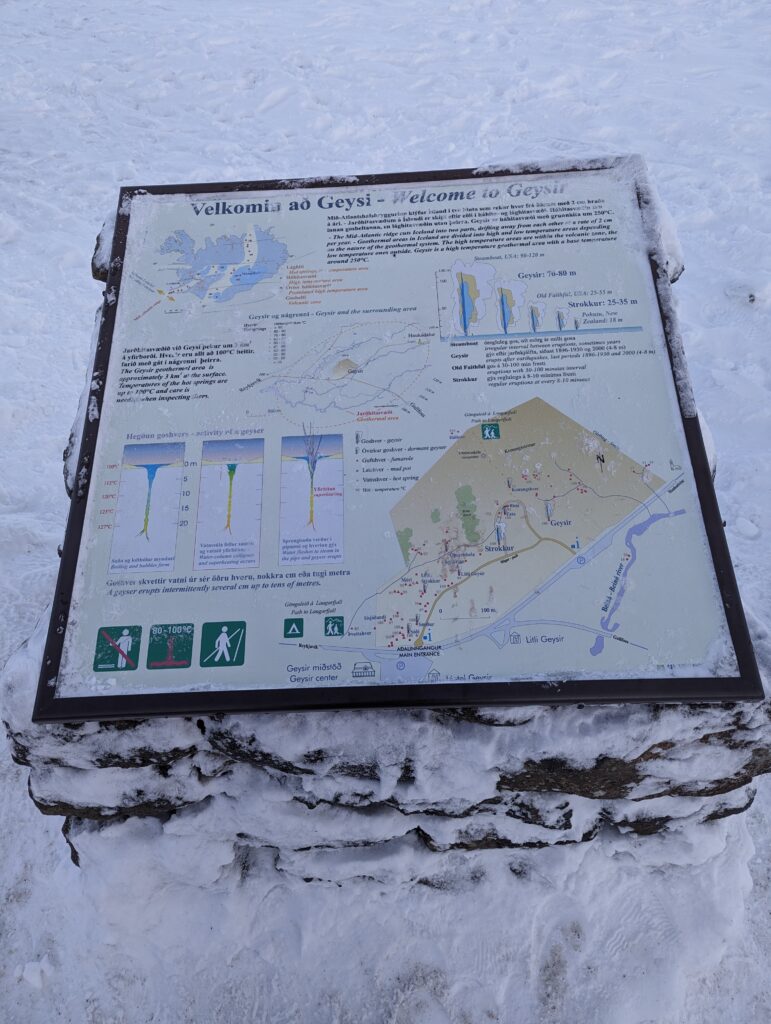
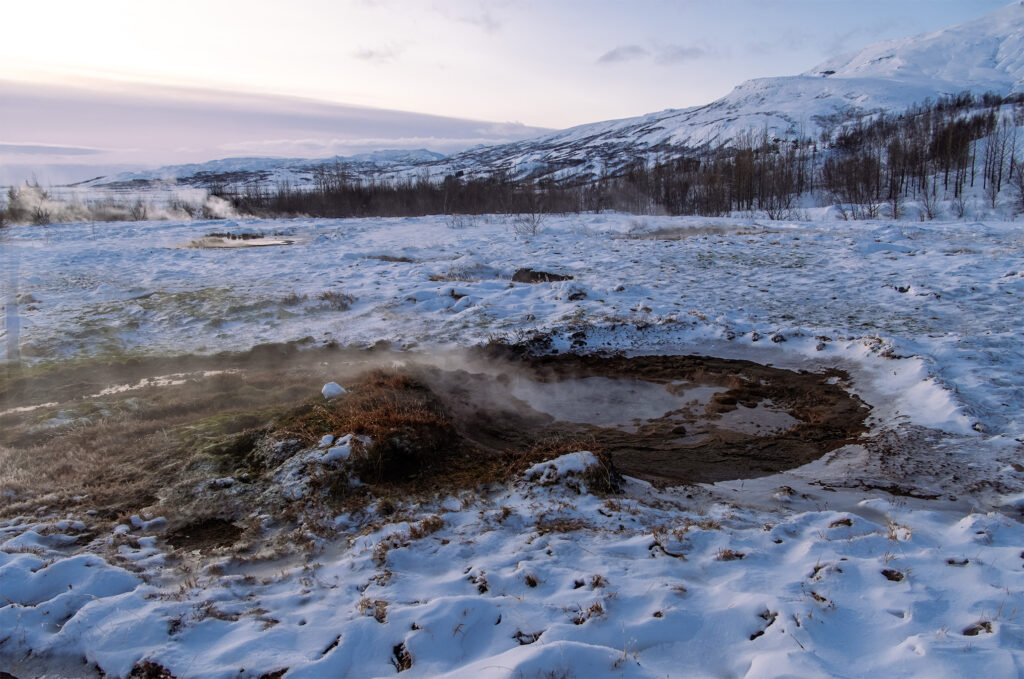
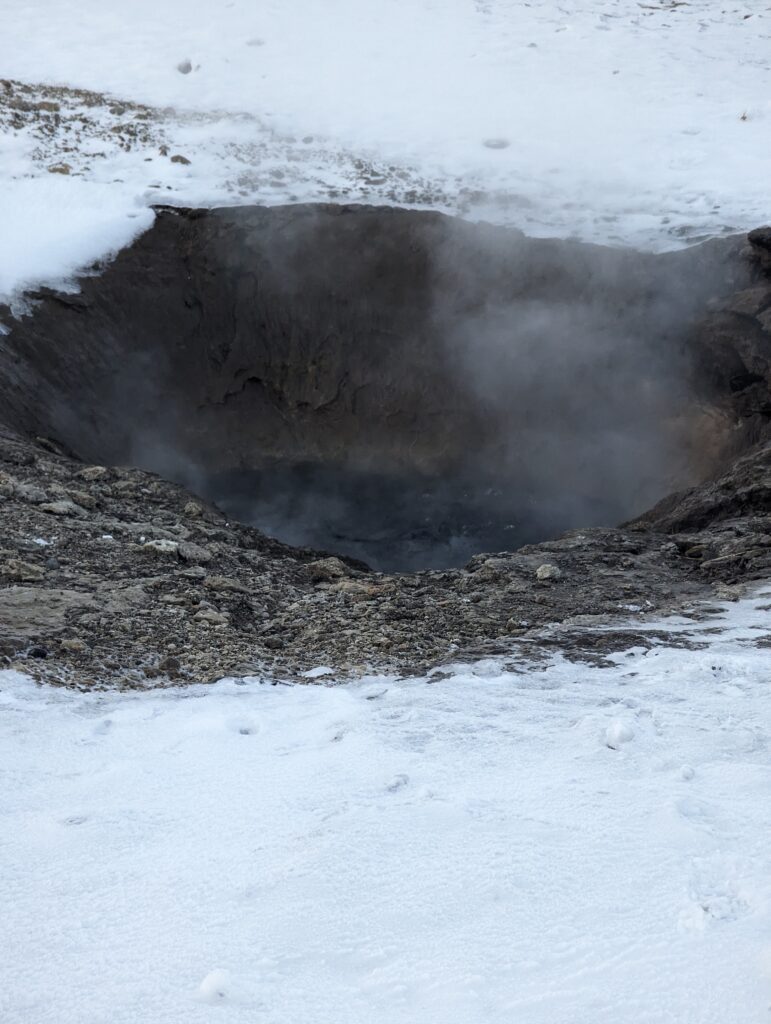
Þingvellir National Park
After a good lunch at Hotel Geysir, we head to our next location in the itinerary and a true marvel- Þingvellir pronounced as Thingvellir. It was the site of the Alþing, the annual parliament of Iceland from the year 930. This is believed to be the first parliament in the world. A UNESCO World Heritage Site and now a national park, it is a site of historical, geological and cultural significance.
The park lies in a rift valley that marks the crest of the Mid-Atlantic Ridge and the boundary between the North American and Eurasian tectonic plates. It is the only place in the world where one can walk between the two tectonic plates. These plates drift approximately 2.5 centimetres a year and have continued for millennials. This has resulted in lava fields and ravines ripped open by earthquakes.
The ravines opened by the tectonic movement filled with the meltwater from Langjökull glacier, which has travelled underground for decades through porous lava rock, undergoing a very thorough filtration process. When it enters the ravines, therefore, it is pristinely clean and crystal clear. Snorkelers and scuba divers can enjoy a swim between the tectonic plates in Silfra. As you walk between the tectonic plates, you get to witness the power of nature.
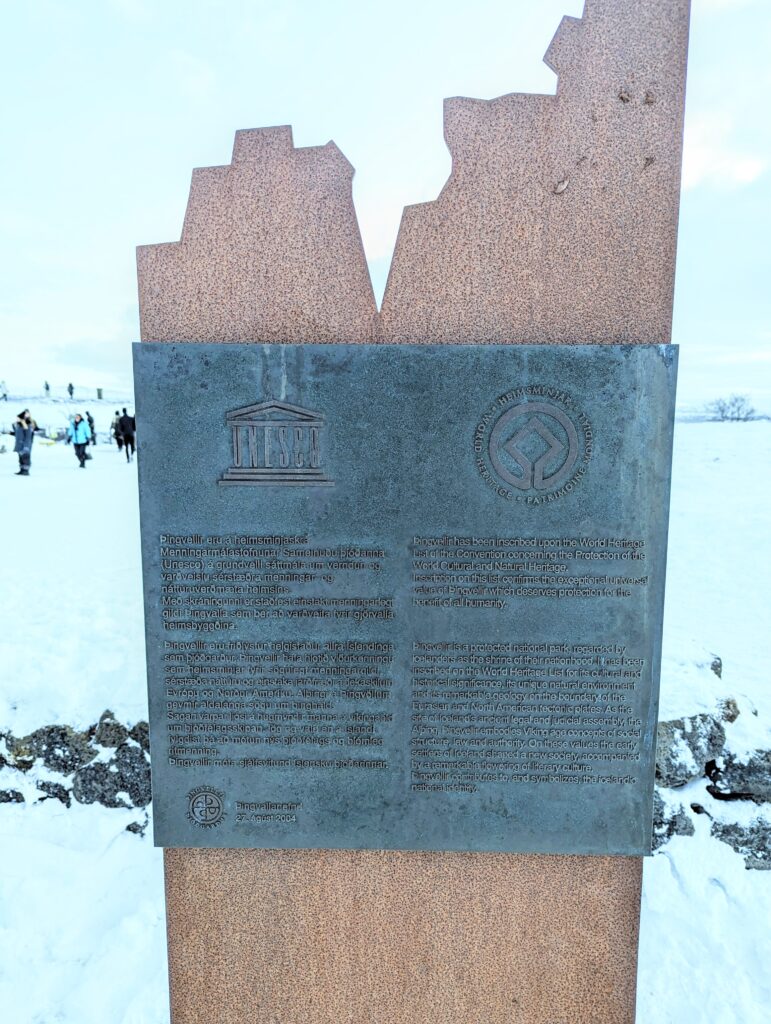
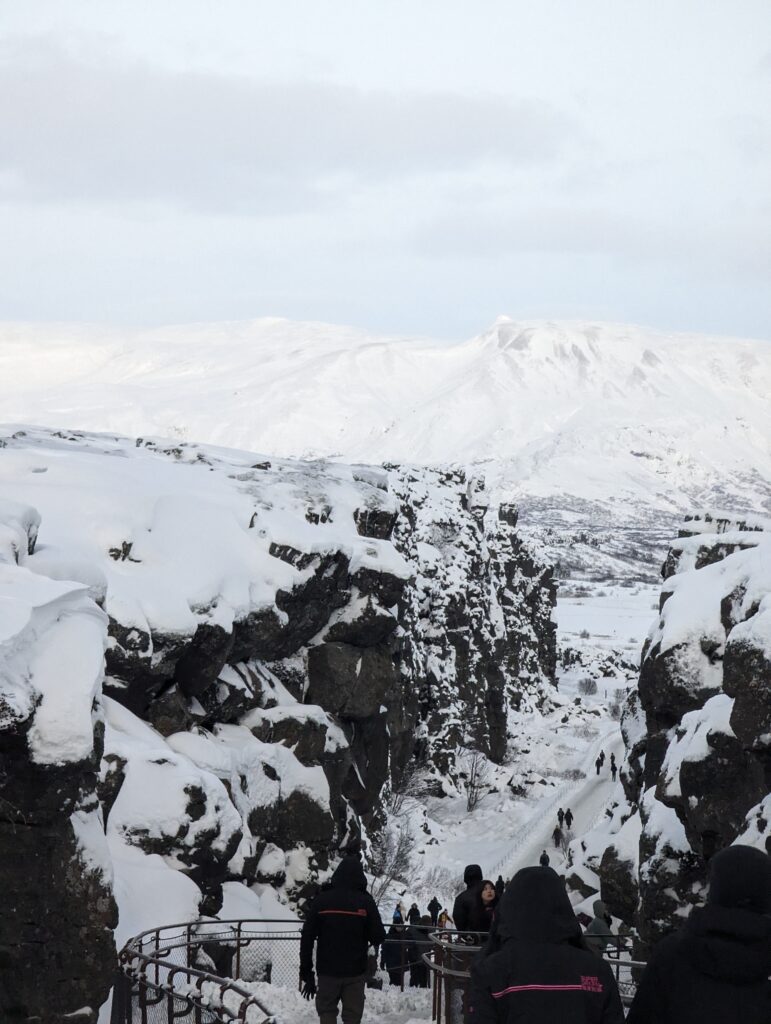
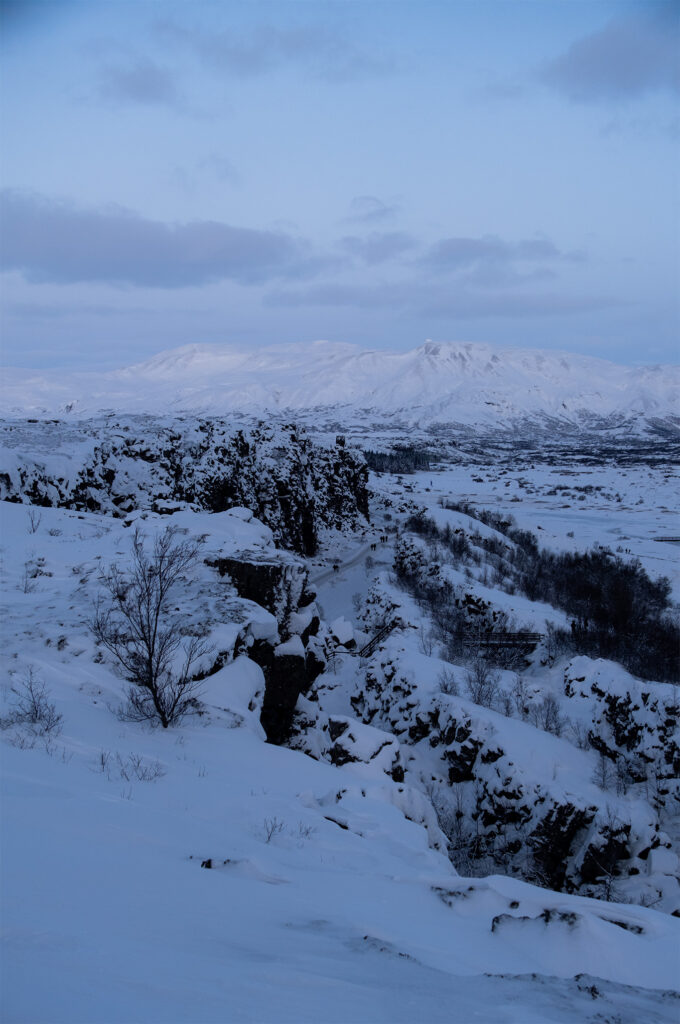
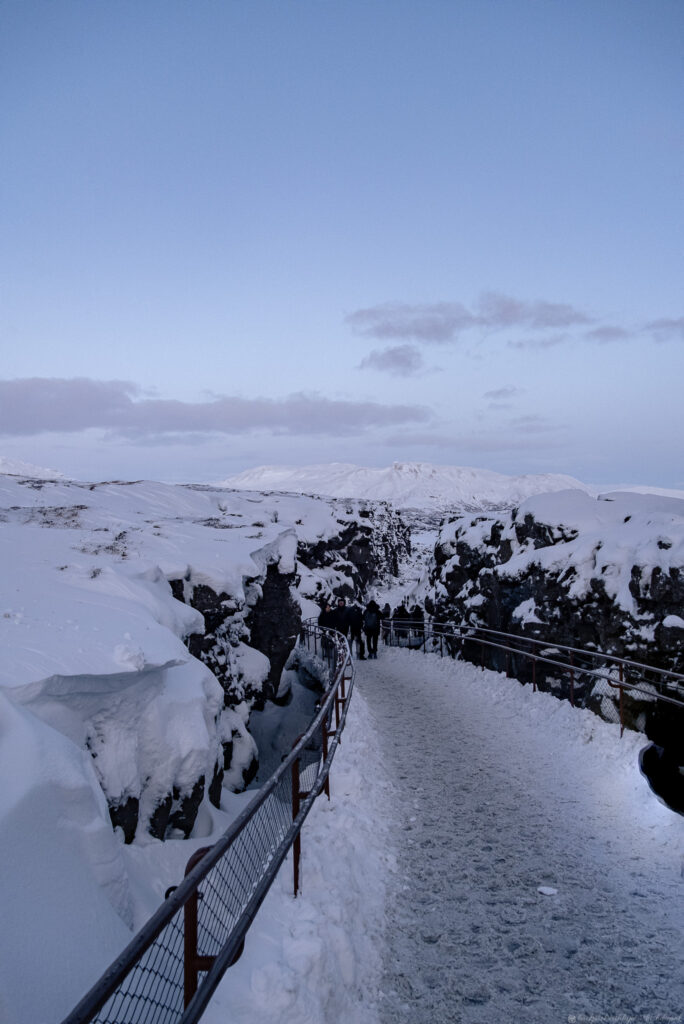
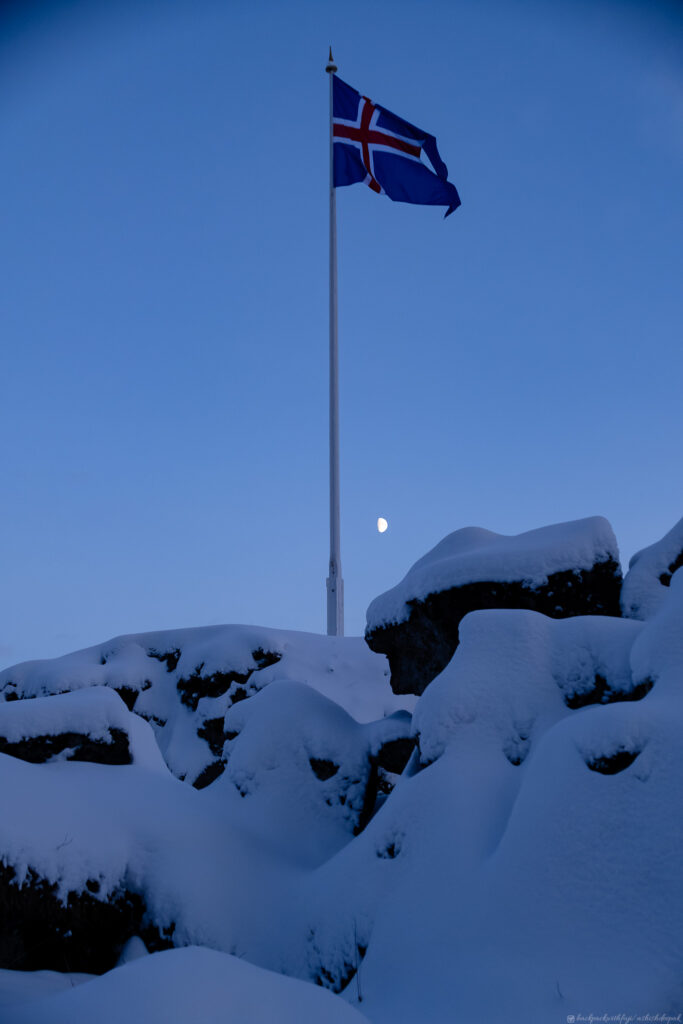
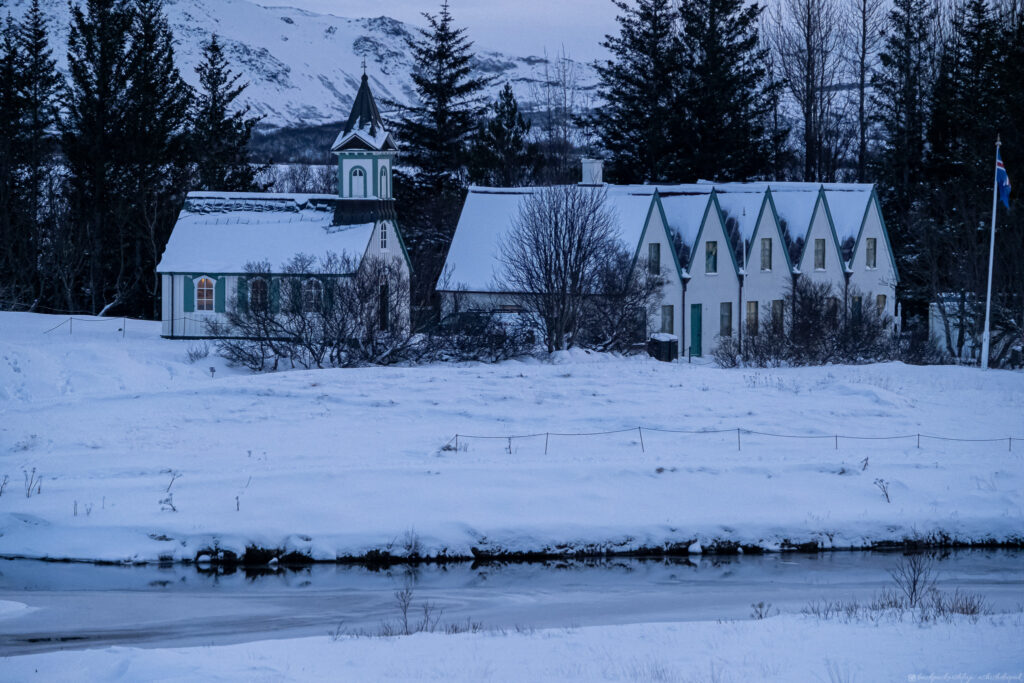
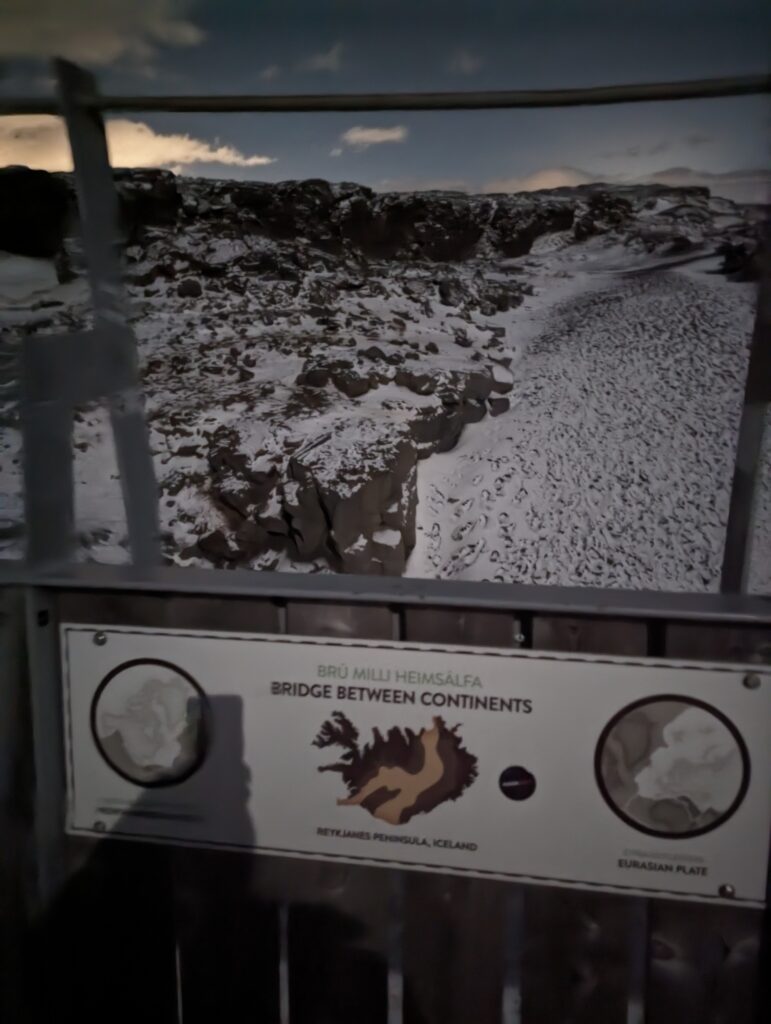
My first day with BusTravel Iceland has been memorable. Day 2 of the itinerary is the tour of the South Coast in the upcoming blog post.

